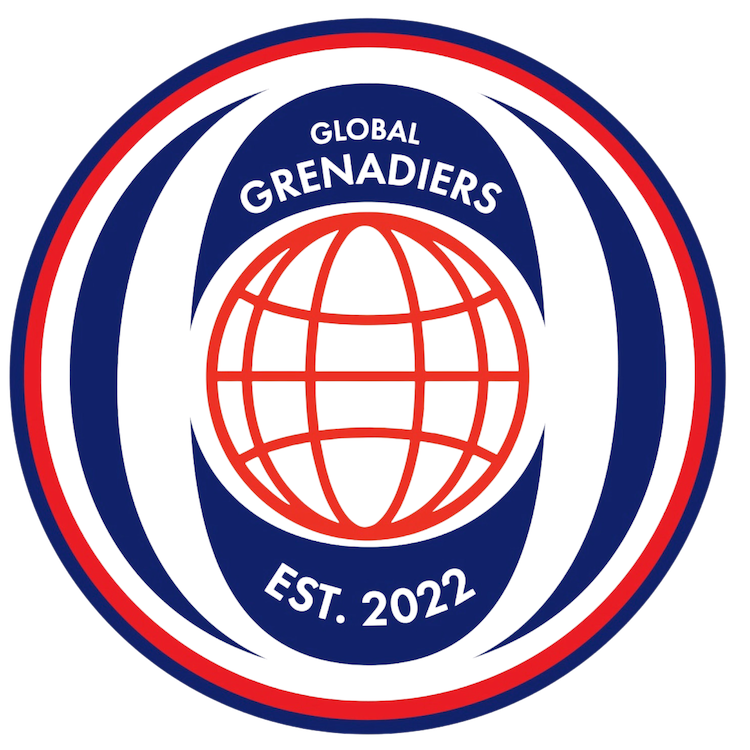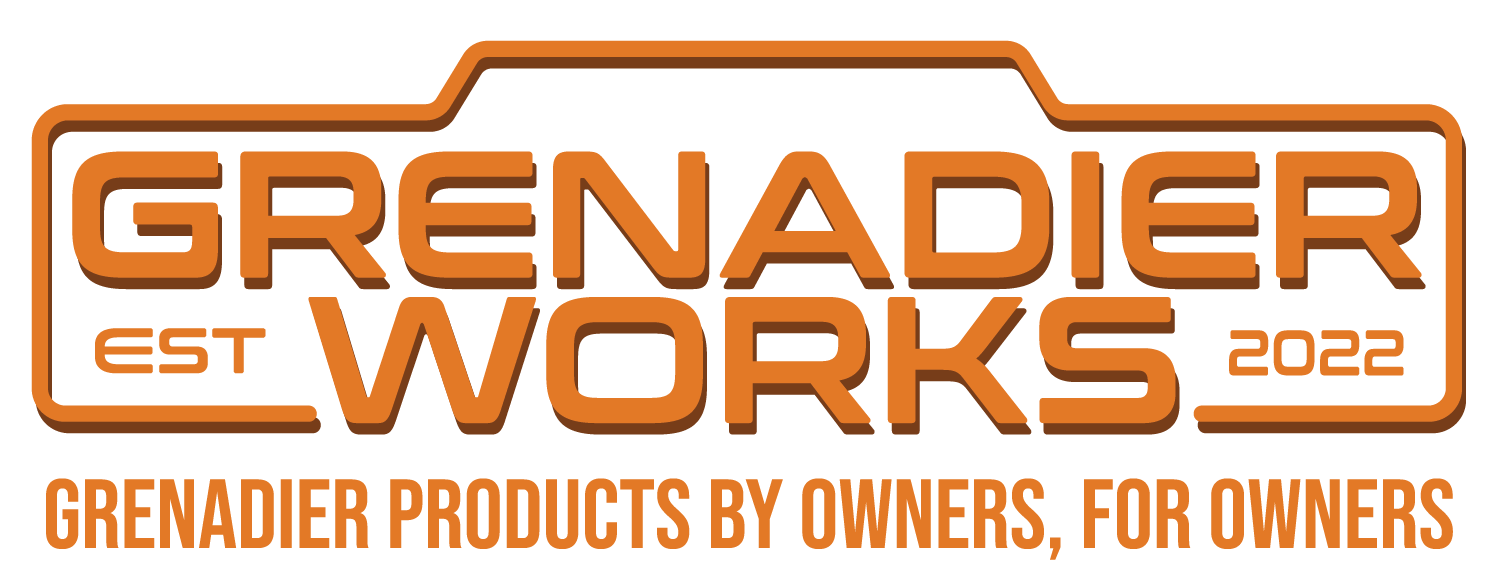Didn't touch the swivel balls They were in good order.Swivel ball preload?
The Grenadier Forum
Register a free account today to become a member! Once signed in, you'll be able to contribute to the community by adding your own topics, posts, and connect with other members through your own private inbox! INEOS Agents, Dealers or Commercial vendors please use the contact us link at the bottom of the page.
You are using an out of date browser. It may not display this or other websites correctly.
You should upgrade or use an alternative browser.
You should upgrade or use an alternative browser.
Steering and Poor Stability
- Thread starter bobbyray1969
- Start date
-
- Tags
- steering
Never seen Series death wobble outside of SPH preload issues.Didn't touch the swivel balls They were in good order.
LOL, does a Series even reach shimmy speeds?Never seen Series death wobble outside of SPH preload issues.
Mine cruises, angrily and noisily, at 100km/hr. Any faster is asking for death.LOL, does a Series even reach shimmy speeds?
- Local time
- 9:50 AM
- Joined
- May 19, 2022
- Messages
- 2,339
That would be far too fast for me. I drive a maximum of 50mph with mine. And then only on roads with little traffic and on country lanes.Mine cruises, angrily and noisily, at 100km/hr. Any faster is asking for death.
109 2-door with OD, will comfortably cruise at highway speeds, subject to inclines.
I never do more than that on a road with oncoming traffic!That would be far too fast for me. I drive a maximum of 50mph with mine. And then only on roads with little traffic and on country lanes.
I don't mind living a little bit dangerously, however there are limits
I've had a loan car from a dealer for a few days now and found the steering somewhat different to my own vehicle.
It feels a little stiffer and returns to centre a little better. Slightly older than mine mileage and VIN wise. It's pretty much a poverty pack but has heated leather seats, no winch or tow bar, no diff locks or high load electrics and no rear ladder. But it does have 17" alloy wheels and Bridgestone rubber.
It's certainly lighter than my Trailmaster and I can feel the difference. So why is the steering different?
I'm suspecting that it's the tyres and lower overall weight of the loaner. I would love to try the Bridgestone's on my Trialmaster to see if they are the difference. It will be interesting to feel the difference when I get mine back next week.
It feels a little stiffer and returns to centre a little better. Slightly older than mine mileage and VIN wise. It's pretty much a poverty pack but has heated leather seats, no winch or tow bar, no diff locks or high load electrics and no rear ladder. But it does have 17" alloy wheels and Bridgestone rubber.
It's certainly lighter than my Trailmaster and I can feel the difference. So why is the steering different?
I'm suspecting that it's the tyres and lower overall weight of the loaner. I would love to try the Bridgestone's on my Trialmaster to see if they are the difference. It will be interesting to feel the difference when I get mine back next week.
- Local time
- 9:50 AM
- Joined
- May 19, 2022
- Messages
- 2,339
Hi @Znarfgh I noticed exactly this difference when I switched from my Trialmaster to a newer Fieldmaster with road tires. With this vehicle, I could let go of the steering wheel even when driving straight ahead for a long time without the vehicle pulling to one side. Especially when I switched back to my Trialmaster, the difference was clearly noticeable. So there are differences from vehicle to vehicle. I hope neither is within tolerance. But I will have it checked again.I've had a loan car from a dealer for a few days now and found the steering somewhat different to my own vehicle.
It feels a little stiffer and returns to centre a little better. Slightly older than mine mileage and VIN wise. It's pretty much a poverty pack but has heated leather seats, no winch or tow bar, no diff locks or high load electrics and no rear ladder. But it does have 17" alloy wheels and Bridgestone rubber.
It's certainly lighter than my Trailmaster and I can feel the difference. So why is the steering different?
I'm suspecting that it's the tyres and lower overall weight of the loaner. I would love to try the Bridgestone's on my Trialmaster to see if they are the difference. It will be interesting to feel the difference when I get mine back next week.
Is this something you did yourself or at an alignment shop?Just got aligned, upped caster to about 2.5 degrees. Tracks much nicer. Nothing else was changed.
I have been hearing that at least one company is working on a new esentric bolt that will give us more caster. Let’s face it, that is the real solution to the steering. My question is when does it become an issue with the factory driveshaft CVs and at what point do we go to a double cardon on the driveshaft.
The front axles are connected to the hubs by double Cardans... CV joints are used on front/rear drive shafts from the transfer case.I have been hearing that at least one company is working on a new esentric bolt that will give us more caster. Let’s face it, that is the real solution to the steering. My question is when does it become an issue with the factory driveshaft CVs and at what point do we go to a double cardon on the driveshaft.
I have been hearing that at least one company is working on a new esentric bolt that will give us more caster. Let’s face it, that is the real solution to the steering. My question is when does it become an issue with the factory driveshaft CVs and at what point do we go to a double cardon on the driveshaft.
Commodore's double cardan comment is more aimed at the operating drive line angles in particular the front where it is common for a double cardan joint to be fitted at the transmission end (replacing the CVJ) to help alleviate vibrations, poor drive shaft cv and uni-joint reliability caused by excessive driveline working angles. In the Grenadiers case to give more front drive shaft working range before the shaft and the cv joint housing start contacting.The front axles are connected to the hubs by double Cardans... CV joints are used on front/rear drive shafts from the transfer case.
My little 88" with the Fairey OD was good for about 55 and pretty solid at that speed too. A hill, however, or a stiff headwind quickly dropped that number.109 2-door with OD, will comfortably cruise at highway speeds, subject to inclines.
I can think of no reason whatsoever to replace a true CV-jointed driveshaft with a fake CV-jointed (double-cardan) one.Commodore's double cardan comment is more aimed at the operating drive line angles in particular the front where it is common for a double cardan joint to be fitted at the transmission end (replacing the CVJ) to help alleviate vibrations, poor drive shaft cv and uni-joint reliability caused by excessive driveline working angles. In the Grenadiers case to give more front drive shaft working range before the shaft and the cv joint housing start contacting.
CVs work at far more extreme angles in front axle applications than in the driveshafts, and they do just fine. The bearing contact surface in a CV joint exceeds that of a 1310-ish U-joint by orders of magnitude.
Commodore's double cardan comment is more aimed at the operating drive line angles in particular the front where it is common for a double cardan joint to be fitted at the transmission end (replacing the CVJ) to help alleviate vibrations, poor drive shaft cv and uni-joint reliability caused by excessive driveline working angles. In the Grenadiers case to give more front drive shaft working range before the shaft and the cv joint housing start contacting.
Using a double cardan at the transfer case/box end requires aiming the differential pinion directly at the transfer case. This would require a "cut & turn" procedure for the front axle housing wherein the inner yokes (C or inner knuckle) are cut free, the pinion is rotated and aimed at the transfer output, and then the yokes are rewelded onto the housing end at the desired caster angle. Generally the housing is scraped clean as steering and suspension connections have to be relocated as well.
Yes, you can increase or decrease caster by just about any amount with a C&T to create better onroad handling, but I think we're a good bit away from that process until owners start installing lifts tall enough for 38s, 40s, etc.
It is only true for the driveshafts with one double cardan and one-single. The driveshafts with two true CV joints can be as misaligned as you want.Using a double cardan at the transfer case/box end requires aiming the differential pinion directly at the transfer case. This would require a "cut & turn" procedure for the front axle housing wherein the inner yokes (C or inner knuckle) are cut free, the pinion is rotated and aimed at the transfer output, and then the yokes are rewelded onto the housing end at the desired caster angle. Generally the housing is scraped clean as steering and suspension connections have to be relocated as well.
It is only true for the driveshafts with one double cardan and one-single. The driveshafts with two true CV joints can be as misaligned as you want.
I honestly didn't know that. Is that two CVs at each end?
Gren dealer did it.Is this something you did yourself or at an alignment shop?
Each of the Grenadier's driveshafts has two CV joints in it. Jeep has been using this design for a long time now.I honestly didn't know that. Is that two CVs at each end?
Similar threads
- Replies
- 7
- Views
- 556
- Replies
- 6
- Views
- 694



